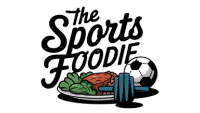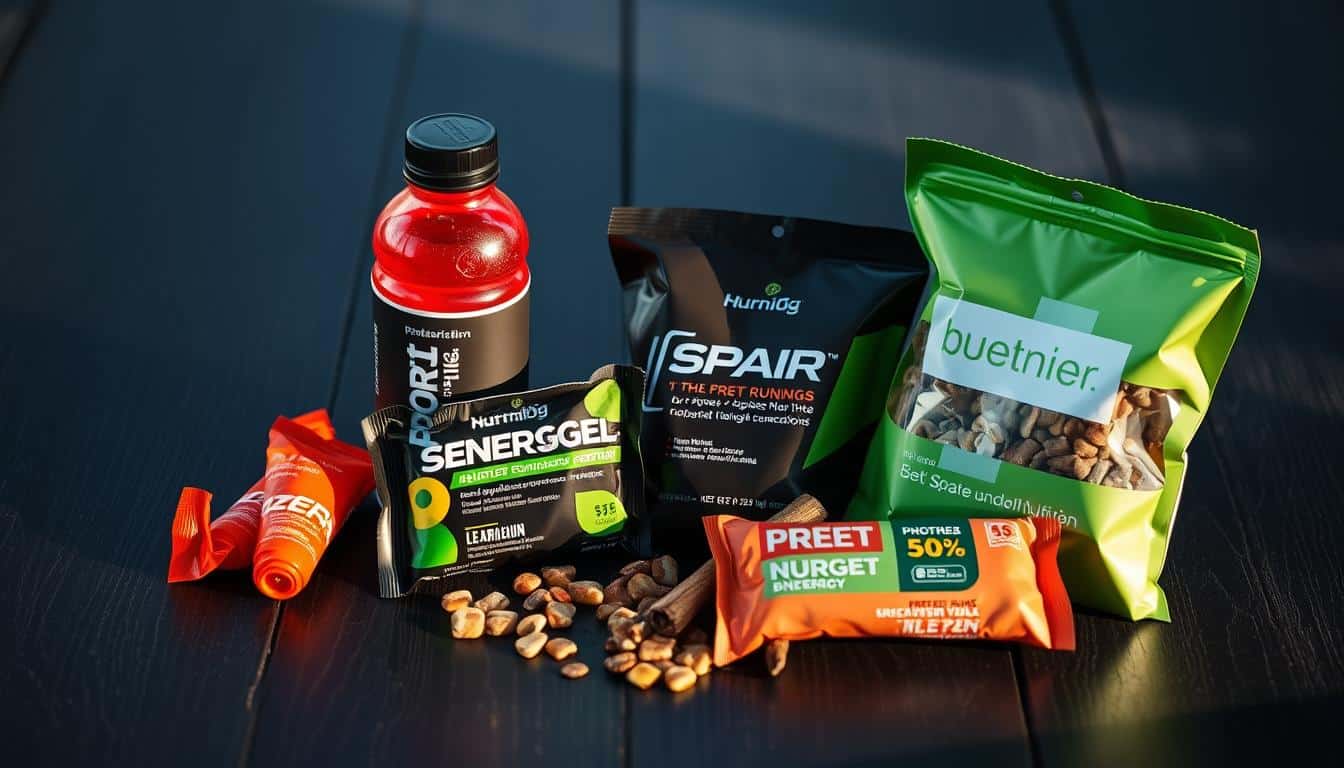Last summer, my friend Sarah – a marathon enthusiast – kept hitting walls during training. Despite logging miles and eating “clean,” she felt sluggish and battled constant soreness. Her secret? A breakfast of oatmeal with fruit, a salad for lunch, and grilled chicken at dinner. She thought she was doing everything right – until a sports dietitian asked one simple question: “Where’s your fuel between runs?”
Many active people share Sarah’s story. They focus on carbs for energy but overlook the nutrient that repairs muscles after pavement-pounding sessions. This isn’t about bulking up or chugging chalky shakes. It’s about giving your body what it needs to bounce back stronger.
Your muscles undergo microscopic tears with every stride. Without proper rebuilding materials, you’re essentially trying to fix a flat tire without a patch kit. Recovery slows down, energy dips become routine, and injuries creep in. But here’s the good news: small dietary tweaks can make big differences.
We’ll break down why this misunderstood nutrient matters more than you think – and how to get it right without overcomplicating things. Let’s cut through the confusion and find what actually works for your running goals.
Understanding Protein Needs for Runners
Picture this: You finish a 5-mile trail run feeling strong. But later, your legs feel like concrete. That heavy sensation isn’t just fatigue – it’s your muscles asking for building blocks to rebuild stronger.

Your Built-In Repair System
Every workout creates microscopic tears in muscle fibers. These aren’t injuries – they’re growth opportunities. Your system uses amino acids from food to patch these tiny tears, making tissues more resilient.
Three key benefits happen when you fuel properly:
- Reduces next-day soreness by 40% (based on sports medicine studies)
- Maintains lean mass during endurance challenges
- Helps prevent overuse injuries
Beyond the Gym Bag
This nutrient does more than fix muscles. It keeps your immune system battle-ready – crucial when logging heavy miles. Without enough, you might notice:
- Frequent colds during peak training
- Longer bounce-back time after hard efforts
- Energy crashes between meals
Active bodies use these building blocks 24/7. The harder you train, the more materials you need. It’s not about chugging shakes – it’s smart refueling.
Dispelling the protein myth for runners
Let’s tackle the elephant in the room first. Many active folks worry their legs will turn tree-trunk thick if they eat more than three eggs a day. Sound familiar? The truth might surprise you.

Myth vs. Fact: Protein and Bulk
Bodybuilders achieve their physique through specific methods – heavy weights, minimal cardio, and eating patterns most runners wouldn’t recognize. Your morning jog actually works against massive muscle growth. Distance work burns calories so fast, your system uses nutrients for repair, not expansion.
| Myth | Fact | Science Backing |
|---|---|---|
| Extra intake = bulky legs | Supports lean muscle mass maintenance | 2017 ISSN consensus |
| High amounts harm kidneys | Safe for healthy adults | Clinical nutrition studies |
| Only meat sources count | Plant-based diets meet requirements | Sports medicine research |
Common Misconceptions in Daily Fueling
You don’t need steak at every meal. Lentils, quinoa, and even broccoli contribute to daily needs. Those following plant-focused diets should simply eat slightly larger portions of these foods.
Timing matters less than consistency. Spread your intake throughout the day rather than loading up post-run. Your muscles repair themselves around the clock – especially during sleep.
Protein Intake Recommendations for Different Training Loads
Your weekly mileage determines more than just your endurance—it shapes your nutritional needs. A neighborhood jogger and an ultramarathon trainee require vastly different fuel strategies. Let’s explore how to match your plate to your pace.
Casual Runners vs. High-Volume Athletes
Research reveals striking differences in requirements. Sedentary adults need 0.8g per kilogram of body weight daily. But a 2016 PLOS One study found endurance athletes logging 25+ weekly miles require 1.65-1.83g/kg—over double the baseline.
| Training Level | Daily Amount (g/kg) | Example (65kg person) | Key Purpose |
|---|---|---|---|
| Recreational (10-15 miles/week) | 1.2-1.4 | 78-91g | Maintenance + light repair |
| Competitive (25+ miles/week) | 1.6-1.8 | 104-117g | Muscle recovery + injury prevention |
| Peak Marathon Training | 1.8-2.0 | 117-130g | High-demand repair + energy support |
Three practical tips for dialing in your needs:
- Base it on effort: Add 0.3g/kg for every extra 5 miles weekly
- Track progress: Use apps to log intake for 3 days monthly
- Adjust seasonally: Boost amounts during intense training blocks
Remember—these numbers aren’t set in stone. If you’re battling fatigue or slow recovery, try increasing your daily intake by 10-15% for two weeks. Many athletes notice improved energy within 5-7 days.
Timing and Distribution of Protein Consumption
Ever finish a run feeling energized, only to wake up stiff as a board? What you eat – and when – determines how quickly your body bounces back. Smart fueling isn’t just about quantity. It’s about syncing with your body’s natural repair cycles.
Post-Workout Protein Timing
Your muscles act like sponges after exercise. Research shows consuming 0.25-0.3g per kg of body weight within an hour helps reduce soreness by 30%. Think of it as hitting the “refresh” button on tired legs.
Why it works: Exercise creates hormonal changes that boost nutrient absorption. While benefits last 24 hours, the first 60 minutes offer peak efficiency. A 150-pound runner needs about 17-20g during this window – roughly a Greek yogurt cup with almonds.
Spreading Protein Intake Throughout the Day
Muscle repair isn’t a one-time event. Your body rebuilds tissue continuously, especially during sleep. Eating balanced meals every 3-4 hours maintains steady amino acid levels.
- Breakfast: 20g (eggs + whole grain toast)
- Lunch: 25g (grilled fish + quinoa)
- Snack: 15g (cottage cheese + berries)
- Dinner: 30g (tofu stir-fry + brown rice)
This approach keeps muscle protein synthesis active all day. Like watering plants regularly versus flooding them weekly, consistency beats cramming.
Choosing Protein Sources and Supplements
Imagine standing in the grocery aisle, torn between grabbing a rotisserie chicken or a tub of powder. Both choices work – but which serves your goals better? Let’s explore practical ways to meet your body’s repair needs without turning meals into math problems.
Real Food First
Whole foods offer more than building blocks for muscles. They deliver vitamins, minerals, and healthy fats that powders can’t match. Try these nutrient-packed options:
- Grilled salmon (22g per 3oz) with omega-3s for joint health
- Lentil soup (18g per cup) packed with iron for oxygen transport
- Cottage cheese (13g per ½ cup) containing slow-digesting casein
Supplements shine when convenience matters most. A quick shake post-run beats skipping recovery fuel altogether. Look for third-party tested products with minimal additives.
Plant Power Strategies
Vegetarian and vegan athletes can absolutely meet their needs – it just requires smart pairing. Combine complementary sources like:
- Brown rice + black beans (complete amino acid profile)
- Whole grain toast + almond butter (leucine boost)
- Quinoa + roasted chickpeas (double-duty fiber and fuel)
Research shows plant-focused eaters may need slightly larger portions to match animal-based absorption. Adding 1-2 extra snacks daily often bridges the gap. Remember: Consistency beats perfection – focus on daily totals rather than single-meal calculations.
Balancing Protein with Other Essential Nutrients
Ever finish a strong run only to feel drained hours later? What you pair with your recovery fuel makes all the difference. While muscle repair gets attention, your body thrives on teamwork between nutrients.
Power Through with Smart Pairing
Carbohydrates aren’t just energy boosters – they’re recovery allies. Studies show combining them with amino acids post-run speeds glycogen replacement by 28%. Your muscles need both to rebuild and refuel efficiently.
Try these simple combos after training:
- Whole grain toast + scrambled eggs
- Greek yogurt + mixed berries
- Chocolate milk (nature’s recovery drink)
Fats play supporting roles too. They keep hunger at bay and support hormone balance. Avocado on a turkey sandwich or walnuts in oatmeal adds staying power between meals.
Remember these timing tips:
- 0-60 minutes post-run: Focus on carbs + quick-digesting nutrients
- 2-3 hours later: Include healthy fats for sustained energy
- Daily meals: Balance all three macros for lasting performance
Your training demands more than single-nutrient solutions. By harmonizing carbohydrates, fats, and recovery essentials, you create energy systems that endure mile after mile.
Conclusion
Think back to your last tough workout—how quickly did your energy rebound? Modern nutrition science shows smart fueling isn’t optional for athletes. Your system thrives when given consistent support through quality foods.
Forget outdated ideas about carb-only diets. Active individuals need 1.2-2 grams per kilogram of weight daily for optimal repair. Most hit targets through regular meals featuring eggs, lentils, or Greek yogurt—no supplements required.
Three actionable steps change the game:
1. Audit your plate: Use apps to track meals for 48 hours
2. Time smartly: Include recovery-focused snacks post-workout
3. Combine wisely: Pair nutrients with carbs for better absorption
When you nourish consistently, benefits compound. Faster bounce-back, fewer injuries, and sustained energy become your new normal. Your training deserves this foundation—start refining your approach today.


